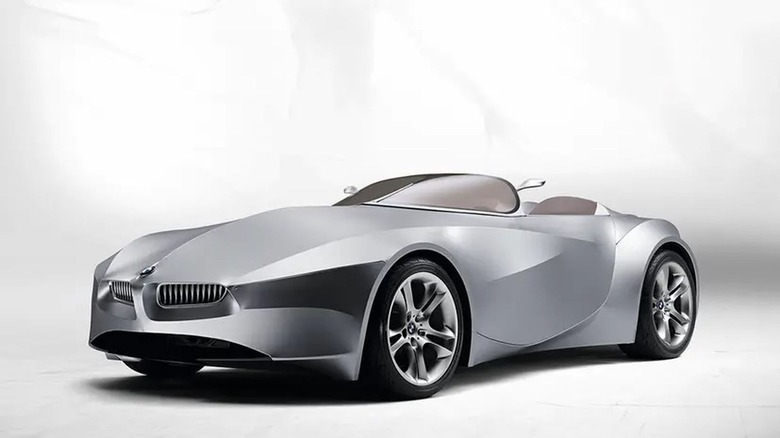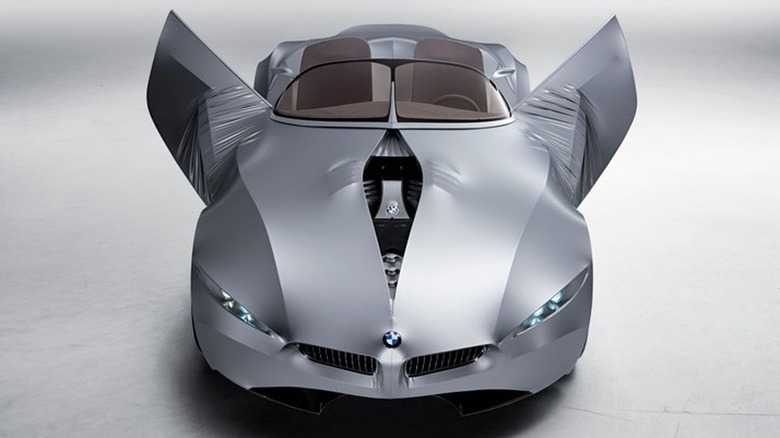The Forgotten BMW Concept Car Made Of Fabric
There are concepts, and then there are such out-of-left-field ideas that they border on utter madness. Although perhaps they are genius, depending on your perspective. Such is the case with the BMW GINA Light Visionary Model: An innovative new design approach to envision the future of cars.
Back in 2008, the BMW Group Design team set out to "challenge" the automotive establishment using what it called the "GINA principle." The acronym stands for "Geometry and Functions In 'N' Adaptions." BMW was keen on pointing out that GINA is not another concept car that uses obsolete automotive principles from the past but a research tool to help forge the future of the industry. BMW's GINA started taking shape in 2001 but wasn't shown to the public until 2008.
Basically, BMW wanted its designers to think outside the box and gave them carte blanche to show off their creative wild side. They did not fail, producing a car that ditched standard components like a hood, doors, roof, trunk, and fenders. It wasn't made from traditional materials like steel, aluminum, or plastic composite. Instead, they came up with something that looked as much like a Zeppelin airship from yesteryear as a space-aged roadster. But we all know what happened to the Hindenburg.
The sky was the limit with GINA
GINA was clad stem to stern in a stretchy, durable, fabric one piece. The polyurethane-coated Lycra material repelled water and was temperature resistant, so it maintained a constant surface tension. The interior was also covered in the stuff. BWM never mentioned how long the fabric would last (though nothing lasts forever) or how much it would cost to replace.
Underneath the skin is an aluminum space frame substructure consisting of four pieces — front, two sides, and rear deck. Each piece had a mesh-like array of metal wires and carbon struts, some of which could move using electro-hydraulic controls. This feature allowed the contours, folds, and lines on the car's skin to actually change at will (via BMW).
For instance, the headlights remained hidden under the skin when not in use, but tiny slits would "open" to reveal them when flipped on — just like eyes. Turn signals and tail lights worked differently in that they could be seen through the translucent material without changing the body. An opening on the hood called a "kidney grille" allowed access to the engine for servicing. Even elements of the car's aerodynamics could be changed on the fly. A rear spoiler would raise but still remain hidden at a set speed, and the rocker panels' contours could be altered and optimized given the driving condition (via BMW).
GINA was, in fact, a revolutionary concept car that steered the German automaker down a different path with an approach that has been carried on in other BMW vehicles. GINA is currently on display at BMW's museum in Munich (via Top Gear).

